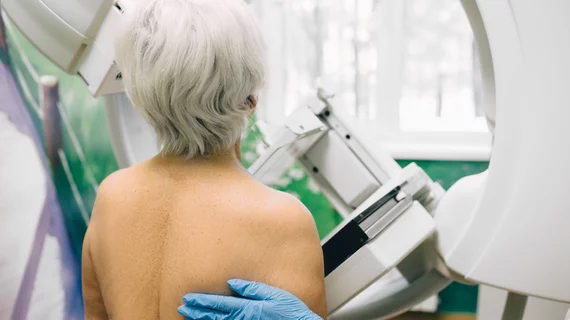Media coverage highlights benefits and overlooks harms of mammography, JAMA authors say
Global media coverage emphasizes the benefits of screening tests, such as mammography, while ignoring the harms, including overdiagnosis, and conflicts of interest, according to a research letter published Monday.
Physicians from Australia and the U.K. analyzed more than 1,100 medical stories, including upward of 500 focused on 3D mammography for breast cancer, sharing their findings in JAMA Internal Medicine.
Out of all newspaper, blog, broadcast media, podcasts and web news stories, 63% reported solely on the benefits of screening tests. The harms of such exams were detailed but deemphasized in 27%, while overdiagnosis was mentioned in 13% of stories that reported on screening downsides.
The conclusions highlight the need for more high-quality reporting by journalists to encourage “realistic expectations” of the benefits and harms of screening exams, Mary O’Keeffe, PhD, of the Institute for Musculoskeletal Health at Sydney Local Health District and University of Sydney in Australia, and colleagues explained.
“Strategies to improve media reporting so that professionals, patients, and the public receive more balanced information about early detection tests are urgently needed,” they added in the letter.
O’Keeffe and co-authors included nonfiction stories published between 2016 and 2019 for their research. The final 1,173 covered liquid biopsy exams, 3D mammography, Apple Watch electrocardiogram, blood biomarker tests, and artificial intelligence.
In addition to the aforementioned conclusions, about half of all stories included the views of individuals with conflicts of interest, the authors reported, but such conflicts were only disclosed in 12% of stories.
Screening debate rages on
There’s been an ongoing debate within the medical community about when to start mammography screening for breast cancer. The highly regarded U.S. Preventative Services Task Force in 2016 revised its guidelines to recommend women undergo screening every two years beginning at age 50.
Meanwhile, the American College of Radiology has strongly opposed that update. Instead, the ACR, along with the Society of Breast Imaging and the American Society of Breast Surgeons, all advise women to seek out annual mammograms at age 40.
In an invited commentary published alongside the April 5 research letter, Indiana University School of Medicine doctors said screening at 40 comes with risks, namely false positives, unnecessary biopsies, and overdiagnosis and treatment for cancers that wouldn’t have become a problem if they were never detected.
At the same time, the pair said mammograms “absolutely are” important. Tiffany S. Doherty, PhD, and Aaron E. Carroll, MD, MS, both added that “they have downsides as well as upsides, and we do not serve patients and the public well by focusing only on the latter or overstating the former.”
Nearly three weeks ago, the ACR slammed a JAMA piece and corresponding editorial that estimated 87% of specialized breast cancer centers in the U.S. offer screening guidance that isn’t aligned with national groups.
In its own response, the college said Weill Cornell Medicine scientists’ claims were “outrageous and insulting.” They noted U.S. imaging providers “largely do not support” the screening approaches recommended by the USPSTF and American Cancer Society.

